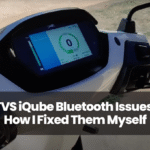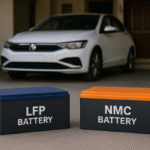India reached a new milestone in 2024, sales of electric vehicles (EV) in India Electric cars India’s EV industry In 2024, India’s electric car industry passed a major milestone by selling 99,004 electric cars, an increase of 20%, from 82,563 units sold in 2023.
This (growth) is supported by the launch of new models, competitive prices and policy support, and this momentum of the transition to sustainability is substantial.
However, EVs accounted for only 2.4% of those 4.07 million passenger vehicles sold, a sign there’s a lot of room for growth in the years ahead.
Tata Motors: Leading the Charge with a Diverse EV Portfolio
Tata Motors still dominated the EV landscape in India in 2024, selling 61,496 electric cars, a modest increase from a year earlier at 60,100.
Even though it held onto the lead, its market share fell from 73% to 62% as competitive pressure increased. Tata’s strong and growing EV line-up is the reason for its success, which consists of models such as the Nexon EV, Tiago EV, Tigor EV, Punch EV, and the recently revealed Curvv EV.
Going forward, Tata is looking to consolidate its position with the upcoming Harrier EV and Sierra EV, further underlining its commitment to accessible, indigenous electric mobility.
Model Comparison: Tata’s EV Sales Performance in 2024
Quite a run for Tata Motors in 2024, as the Indian automaker stood to be one of the most popular Indian automakers out of India’s EV segment.
The Punch EV was the best-selling model, with sales of 22,724. The next highest was the Tiago EV at 18136, while the Nexon EV came in at 14275. Tata had also launched the Curvv EV, a trendy-looking looking coupe-SUV that managed to sell 6,512 units in its first year.
Even the older Tigor EV continued to see a consistent demand of 4,914 units. With such a wide portfolio, Tata was able to address the needs of a wide spectrum of buyers, from budget customers to those who desired a premium electric experience.
Monthly Sales Trends of Tata EVs: January and February 2025
Tata Motors started 2025 with robust EV sales, topped by the Punch EV, which saw 16,231 units in January. But its numbers dropped in February to 14,559 units, a drop of 10.3%.
The Nexon EV showed stability with 15,397 units sold during January and a drop of just a little to 15,349 units in February, showing less fluctuation.
Meanwhile, the Tiago EV followed an upward trend, from 6,807 units in January to 6,954 in February, a gentle 2.16% rise. These stats reflect how Tata’s EV offerings still remain dependable, even with changing consumer habits and seasonal market trends.
Strategic Initiatives and Future Outlook For Tata
Tata Motors is further consolidating its leadership position by creating a holistic e-mobility ecosystem as well as reinforcing Tata Motors as a responsible industry leader.
The upcoming Harrier EV and Sierra EV are just another display of its intent to increase its horizons in premium and SUV segments.
Tata’s strategy of creating an end-to-end electric vehicle (EV) ecosystem from localising battery production, charging infrastructure and connected car technology places it well for long-term growth.
It is available with a range of powertrains (petrol, diesel, CNG and all-electric), which allows Indian buyers to pick their own choice. With solid government backing in the form of FAME II and GST cuts, Tata plans to cross the 1 lakh EV sales mark in 2025 as it reiterates its electric-first mission for a cleaner future.







